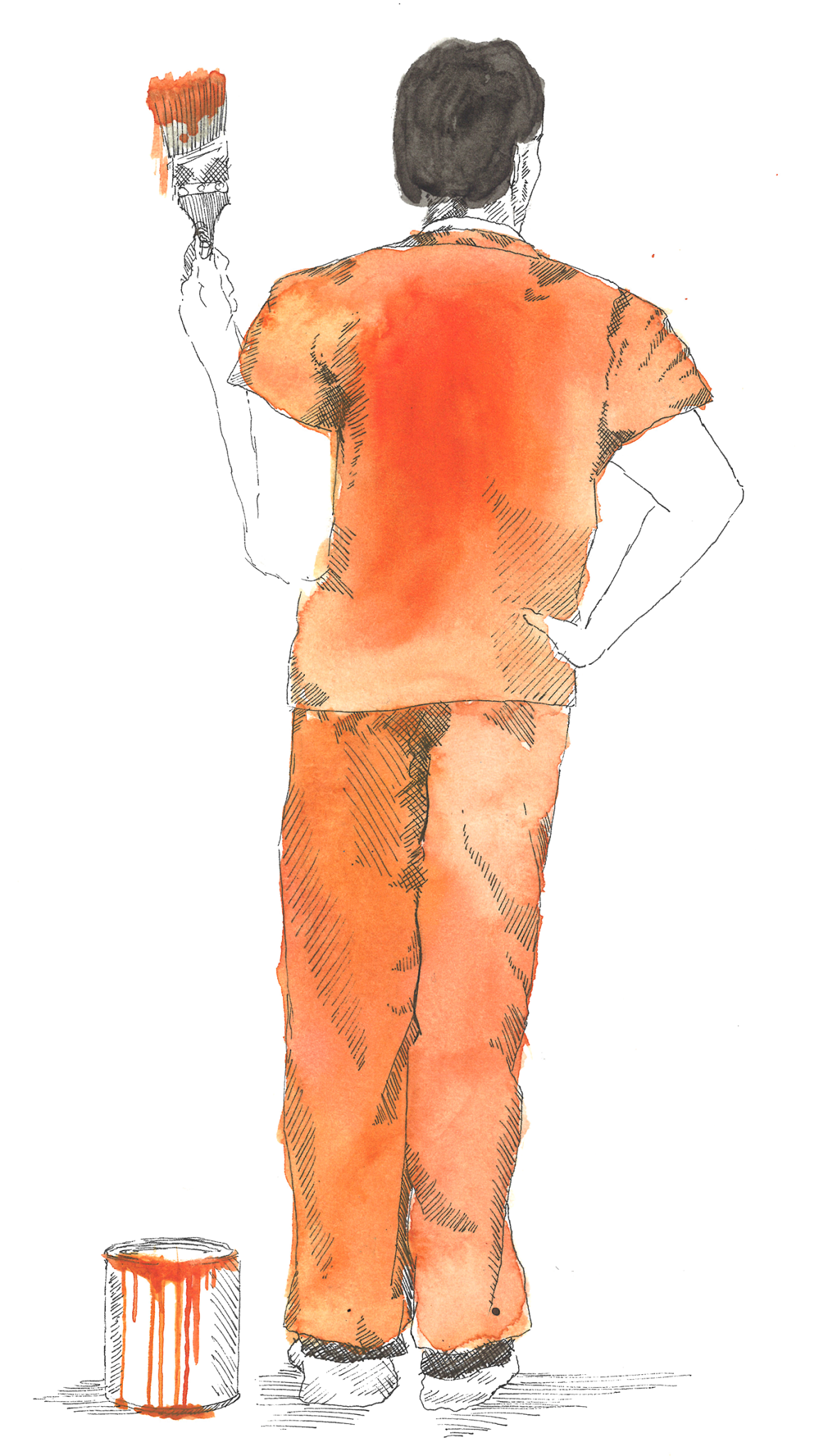Behind a table in the softly lit main room of the South Side Community Art Center sat a panel of five artists. They had come together at the request of the Prison+Neighborhood Arts Program (P+NAP) to discuss the influence of the Black Arts Movement in Chicago and its role in providing inmates in Cook County prisons with an arts education.
If there was ever a place in Chicago for such a discussion, it was there at the South Side Community Art Center. Opened in 1940 by Dr. Margaret Burroughs, the SSCAC helped innumerable Chicago artists start their careers and helped launch the Black Arts Movement as a whole. Burroughs left a grand legacy in the establishment of the SSCAC and the DuSable Museum, as well as in the years she spent teaching art and writing to inmates of the Stateville Correctional Center, a high-security prison forty miles southwest of Chicago. The artists on the P+NAP panel have similarly established themselves as distinguished leaders within their artistic fields, while also dedicating years to teaching art within the prison system. Today prisons receive little to no government funding for education; when Clinton signed the Crime Bill Act in 1994, all federal and state education grants for inmates were eliminated. The bill allowed for an increase of nearly ten billion in funding for police forces, prisons, and prevention programs, but it effectively deprived inmates of their right to a fundamental part of the democratic ideal: a free education.
Useni Perkins, a distinguished Chicago poet and sociologist, began teaching literature in the 1960s in the Cook County Jail and Pontiac Correctional Facility, where he found well-read and politically conscious inmates, some of whom he is still in contact with today. Perkins remarked, “I just don’t think that the community understands that many prisoners hadn’t been convicted, they just couldn’t pay the bond.” But he believes that it falls on the greater community to counter the injustice done by the justice system. “If you don’t help someone, you in trouble yourself.”
To Perkins’ left sat Phil Cohran, who came to Chicago in 1953 to study music and went on to make a profound impact on the Black Arts Movement and on Chicago as a whole. “When I first started teaching music at Stateville,” Cohran said, “the guards told me, ‘They don’t know nothing about sensitivity, they don’t know what a harp is.’ But ten years later, my musical technique had spread throughout the prison system.”
Cohran’s musical technique didn’t just spread but inspired musical groups both inside and outside of prisons. “My group that I taught at Pontiac was the most advanced group, because I taught them for four years,” said Cohran. “They call themselves the Midstate Heritage Ensemble, and I have at least twelve recordings from them, and I’m gonna publish them,” Cohran proudly stated. “Some of them might be gone, but they will get the credit they deserve because they sound as good as anybody out there.”
Masequa Myers, Executive Director of the SSCAC and acclaimed performer and producer, introduced P+NAP at the beginning of the discussion. She characterized P+NAP as a continuation of the time and effort that Burroughs, Cohran, Perkins, and (though she didn’t elaborate so much on her own contributions) she herself had dedicated to teaching the arts in the prison system.
P+NAP is a nonprofit organization co-founded in 2012 by Sarah Ross, and it looks to the exhaustive work of the 1960s as groundwork for the future. It connects teachers of the arts in the Chicago area with inmates in Stateville Prison and holds classes on a semester system, with each class culminating in a final project. The works from the most recent exhibit, “The Material That Went to Make Me,” were mounted around the walls of the SSCAC’s main gallery.
Sarah Ross spoke about the way Stateville was in 1968—long before the damage done by the Crime Bill Act—when 11,000 people attended the fourth annual exhibition outside the Stateville gates, at which 900 pieces of artwork made by inmates were purchased. The exhibition is no longer, and the three GED courses offered today serve only a small percentage of the inmate population, but P+NAP seems to be making clear steps in the direction of a better system.
I spoke briefly with Laurie Palmer, a professor at the School of the Art Institute of Chicago and a teacher for P+NAP, about her hopes for the future. “P+NAP is entirely committed to policy change,” she told me. “The kind of conversation we just had can lead towards legislative change, but legislative change is not by any means the answer. To be linking the people inside the prison and outside, that’s about policy change on both sides.”
Though the panelists were less than optimistic about the resolution of the prison system’s discrepancies—the “revolving door” through which the majority of juvenile delinquents ultimately end up incarcerated as adults and the privatization of the prison system—there was an ever-present hope in P+NAP and the power of art. “Art has to reflect a struggle,” Perkins said emphatically. “Art is a liberating force.”
When the discussion opened up to the audience members, a woman who worked as a librarian within a Cook County prison was delighted to discover that Cohran had been part of the group that created the library with a donation of several thousand books. Another woman who has worked within the prison system since 1945 introduced herself to Cohran as the mother-in-law of one of his favorite music students: “My son-in-law can’t get out, but he’s still playing,” she said. Turning back towards the audience with a faint smile on her lips, she added, “and if any of y’all wanna help me, that’d be fine.”



